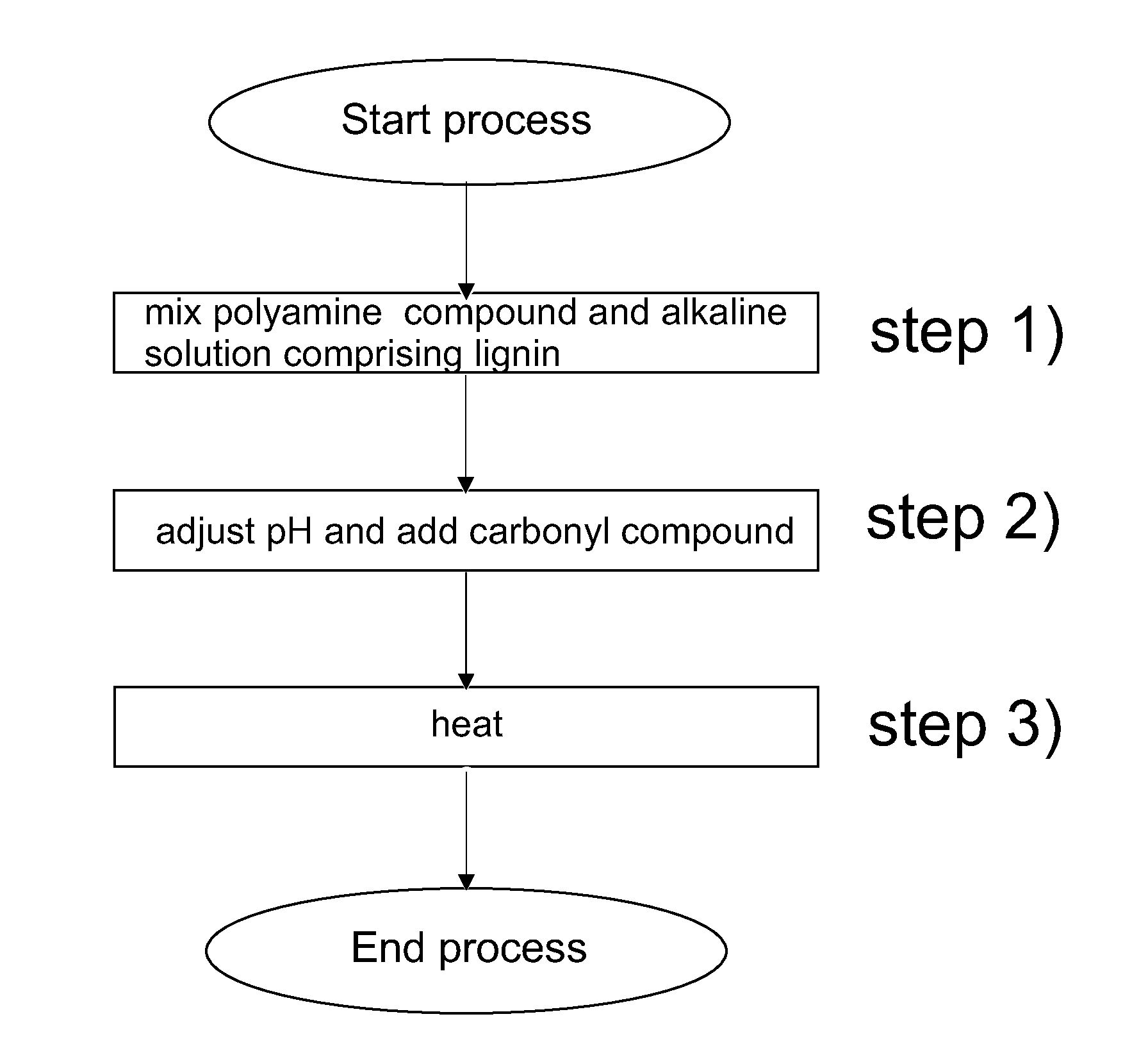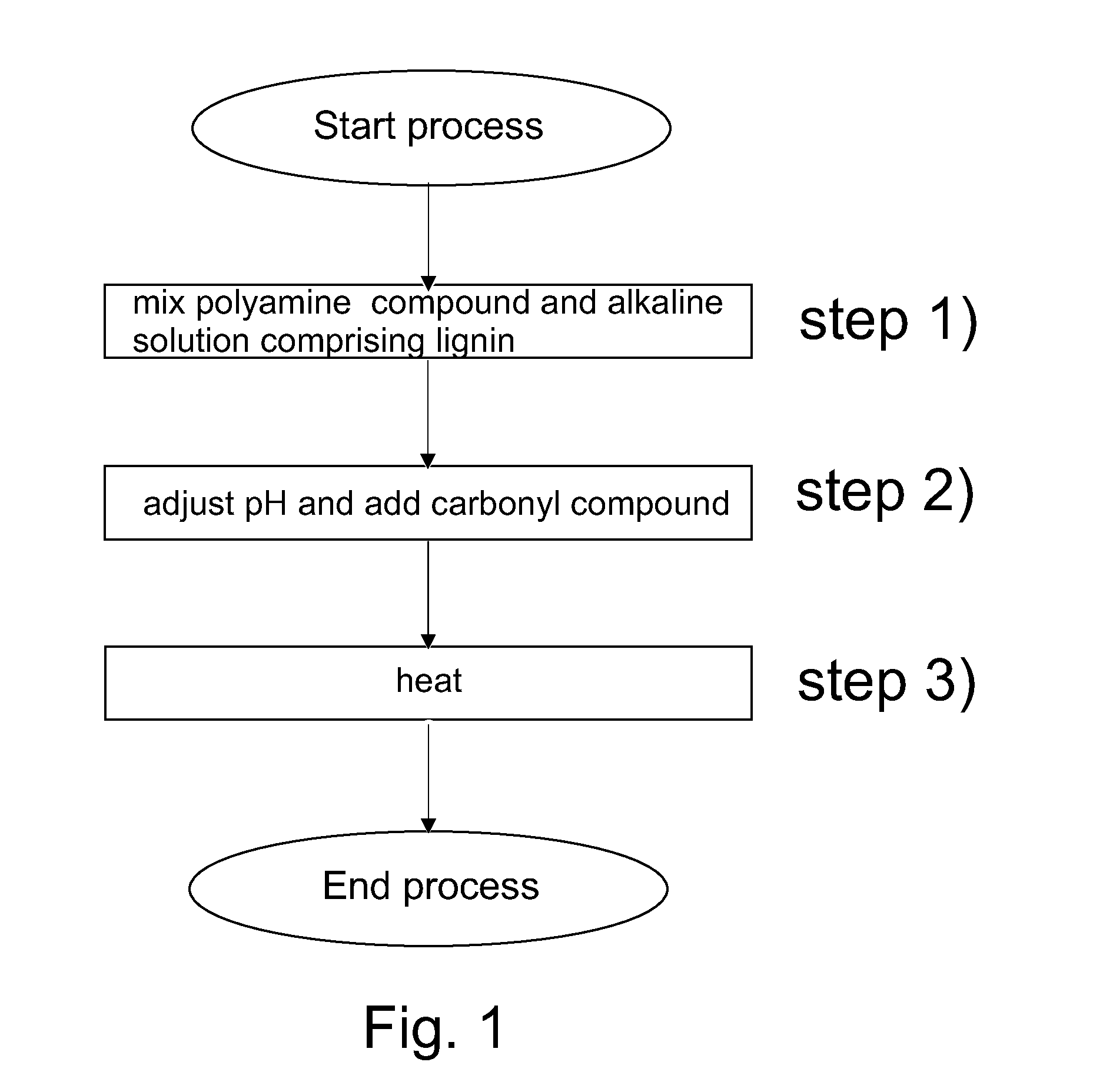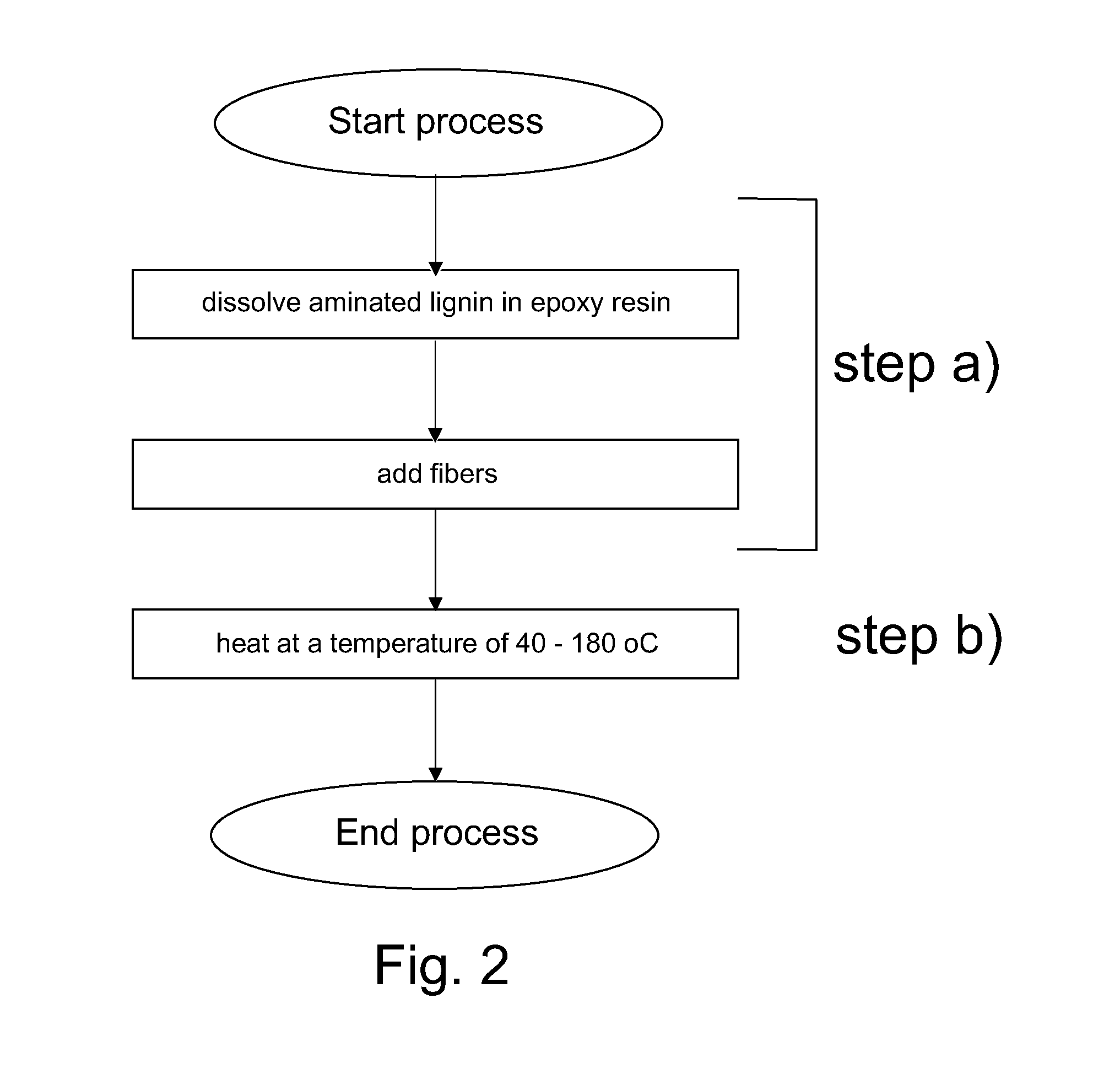Fiber reinforced composite
- Summary
- Abstract
- Description
- Claims
- Application Information
AI Technical Summary
Benefits of technology
Problems solved by technology
Method used
Image
Examples
example 1
Preparing Aminated Lignin
[0081]In this example lignin was aminated according to the embodiment of the present invention shown in FIG. 1.
[0082]Before performing the amination reaction the lignin used in this example, Standard Kraft Lignin (SKL), was purified in accordance with the following procedure: 5 g of SKL was dissolved in 50 ml of 0.1 M NaOH solution and purified via dialysis (dialysistube: 3500 nominal molecular weight limit (NMWL)) in 1.5 l of water, which was changed three times every eight hours for 24 hours. Thereafter, the SKL was freeze-dried to give a fluffy brown powder of purified SKL (pSKL) (yield: 4.1 g, 82%).
[0083]The purified lignin was then treated in the following manner: 1.6 g of purified SKL was dissolved in 100 ml of 0.5 M of NaOH-solution in a 250 ml 3-necked-flask with dimroth-cooler and dropping funnel (pH=13.3, adapting temperature (aT)=22.9° C.). Then 3.3 ml (3.17 g, 30.7 mmol) of diethylenetriamine (DETA) was added dropwise (pH=13.3). Under constant st...
example 2
Preparing a Hemp Fiber Reinforced Composite
[0089]In this example fiber reinforced composite was produced. The following components and their amounts were used:
aminated lignin 15 g
Epilox® L285 17 g
[0090]hemp fibers 10 g
[0091]The aminated lignin was produced in accordance with example 1. The aminated lignin produced in line with example 1 contained less than 5 weight-% of carbohydrates and it had an average molecular weight of about 9000 g / mol. The properties of the aminated lignin produced enabled it to be used as a curing agent in the present example.
[0092]15 g of aminated lignin from example 1 was dispersed in 17 g of Epilox® L285 epoxy resin (Epilox® A19-00+Epilox® P 13-20) in glass. The temperature was kept under 40° C. Hemp fibers were mixed into the reaction mixture for embedding said fibers therein. Then the reaction mixture was heated at a temperature of 125° C. for 24 hours during which crosslinks were formed between epoxy resin and aminated lignin.
[0093]The formation of cro...
example 3
Preparing a Glass Fiber Reinforced Composite
[0095]In this example fiber reinforced composite was produced. The following components and their amounts were used:
aminated lignin60gepoxy resin120gunmodified lignin80gtriethylenetetraamine (TETA)15greactive diluent (Epilox ® P 13-20)20gglass fibers100g
[0096]The aminated lignin was produced in accordance with example 1. The aminated lignin produced in line with example 1 contained less than 5 weight-% of carbohydrates and it had an average molecular weight of about 9000 g / mol. The properties of the aminated lignin produced enabled it to be used as a curing agent in the present example.
[0097]60 g of aminated lignin from example 1 was mixed with 15 g of TETA. 120 g of Epilox® epoxy resin (Epilox® A18-00) and 20 g Epilox® P 13-20 and 80 g of unmodified lignin were mixed thoroughly in a mixer. The mixture comprising aminated lignin was then added to the mixture comprising epoxy resin and mixed thoroughly to form a homogenous mixture. The temp...
PUM
| Property | Measurement | Unit |
|---|---|---|
| Temperature | aaaaa | aaaaa |
| Molar mass | aaaaa | aaaaa |
| Weight | aaaaa | aaaaa |
Abstract
Description
Claims
Application Information
 Login to View More
Login to View More - R&D
- Intellectual Property
- Life Sciences
- Materials
- Tech Scout
- Unparalleled Data Quality
- Higher Quality Content
- 60% Fewer Hallucinations
Browse by: Latest US Patents, China's latest patents, Technical Efficacy Thesaurus, Application Domain, Technology Topic, Popular Technical Reports.
© 2025 PatSnap. All rights reserved.Legal|Privacy policy|Modern Slavery Act Transparency Statement|Sitemap|About US| Contact US: help@patsnap.com



